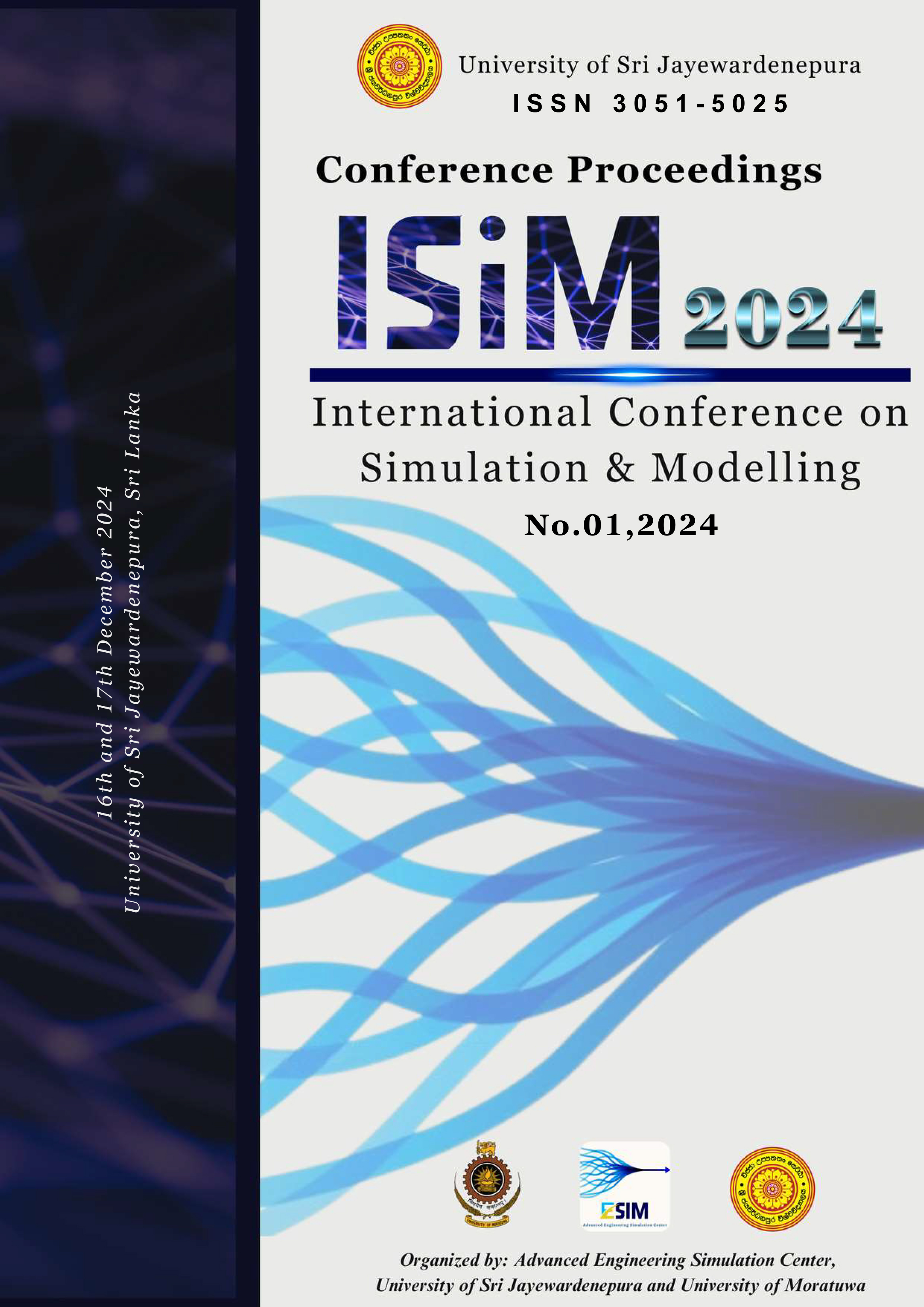Transient Thermal Simulation Based Design of a Remote Temperature Measuring System for Tire Molds
Keywords:
Tire mold, Curing process, Remote temperature measurement, Transient thermal analysis, Temperature, measuringAbstract
The curing process of tires significantly impacts their quality, performance, and production cost. Therefore,
temperature control is the most crucial aspect of the curing process. Temperature measurement of the mold that reflects the tire temperature is done with human involvement, which has an associated health risk. Hence, this study aimed to develop a remote temperature measuring approach to avoid direct human involvement. The temperature distribution of the tire mold during the curing process was simulated using the transient thermal analysis system in Ansys workbench by maintaining the boundary conditions fixed. The optimal temperature measuring locations were evaluated to determine the best location to insert the temperature measuring sensor. Boundary conditions were created according to the requirement to maintain the internal temperature of the mold at the curing temperature (140 °C). Resistance Temperature Detectors (RTD), a contact-type temperature measuring device were identified as the most suitable for this application based on their high accuracy and stability. After selecting the temperature sensor and determining the insertion point, a wireless communication method was developed based on the ATmega328 microcontroller, in which the communication between the transmitter and receiver circuits occurs via the NRF24L01 2.4 GHz transceiver module. Thus, this remote mold temperature measurement approach would help eliminate human involvement in temperature measurement while providing accurate measurements for the curing process.

